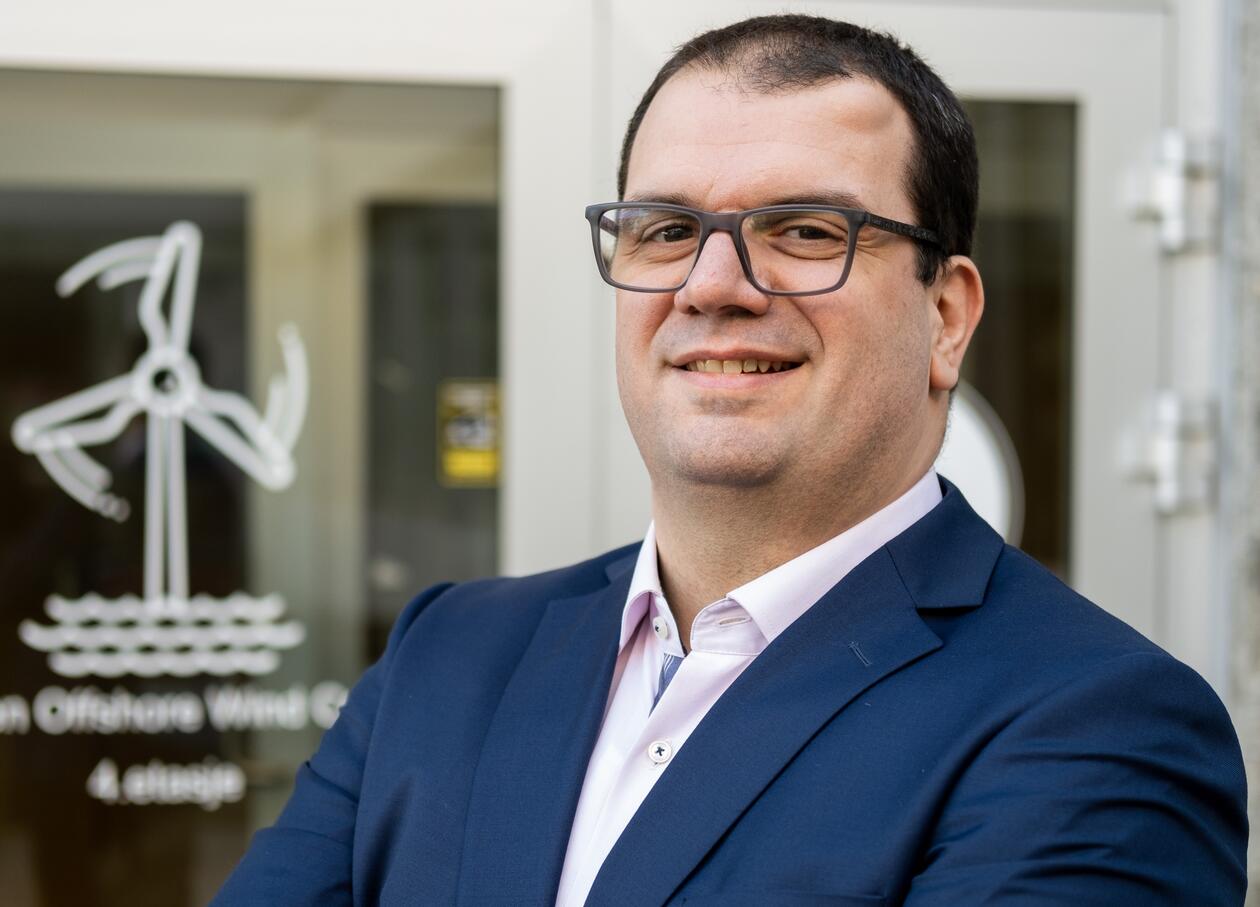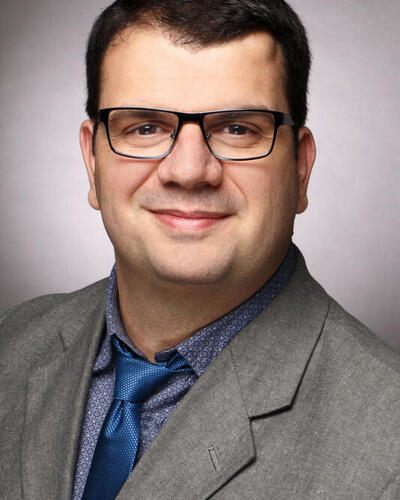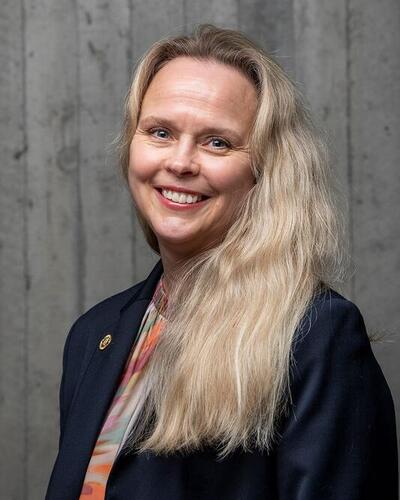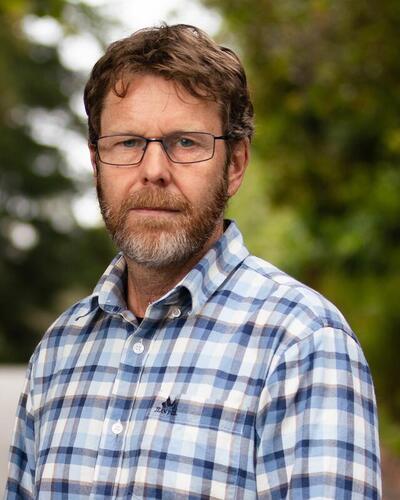A new consortium in Norway gathers to establish a groundbreaking offshore wind centre
Offshore Wind 2040 (OW2040) is on track to become a Centre for Environment-friendly Energy Research (FME) by the end of 2024. If the Research Council of Norway approves the FME application, OW2040 could become a world-leading hub for offshore wind development.

Hovedinnhold
“The Norwegian government has decided to allocate areas for 30 gigawatts of offshore wind production in Norway by 2040. To achieve this goal, 1,500 wind turbines must be installed over the next 17 years. OW2040 aims to solve the challenges that can prevent Norway from installing enough offshore wind at a sufficiently fast pace”, says Cristian Gebhardt.
He leads the work to establish the new research centre OW2040 through the Research Council of Norway's FME scheme together with the Norwegian Institute of Marine Research (HI), NORCE, the University of Stavanger (UiS) and the University of Agder (UiA). These make up the consortium that will contribute to the centre's work.
If the FME application is successful, OW2040 will conduct research and education related to offshore wind over a period of eight years (2024-2032).
The wind turbine is not the main object of the research
“Offshore wind is much more than the wind turbine itself. It is a long chain of processes. We will investigate the seabed, impacts on ecosystems and society, legal aspects, how data is collected, and much more”, says Gebhardt.
“Currently, a lot of research concerning the technical aspects of wind turbines is being conducted. However, we lack research into the aspects and porcesses that occur prior to the licensing process - and this is where OW2040 comes in, he continues.
In this context, a license refers to the permission given by Norwegian public authorities to buy a property, utilise a natural resource or similar. The authority to grant licenses to offshore wind farms lies with the Ministry of Petroleum and Energy. Before a license can be granted, environmental investigations at various levels of detail must be carried out.
“The wind turbine is not the main object of research at the centre that we want to establish. This makes OW2040 unique - there is currently no other FME like OW2040”, says Gebhardt.
Broad support
“OW2040 will be situated in the southern and western parts of Norway. This is highly beneficial to us, as many of the newly identified offshore wind areas are located along the coast from Agder to Bergen. The consortium members know each other well, and it will be a great advantage for us to be able to share resources and infrastructure”, says Gebhardt.
OW2040 has broad support among public and private actors in Norway. The initiative has almost 50 potential user partners who have declared that they support the centre.
On Wednesday 14 June, Bergen Offshore Wind Centre (BOW) hosted a workshop where the consortium and some of the potential user partners worked together on the various work packages (WPs) that will be included in the final FME application. The WPs contain collections of specific tasks that the centre will tackle.
“We organize workshops to ensure that the WPs match the needs of the potential user partners”, says Gry Parker, administrative coordinator at BOW.
“It is important to incorporate their unique priorities”, says Gebhardt.
Norway can become an offshore wind superpower
The importance of the OW2040 centre extends beyond Norway's borders.
“Europe has a target of installing 450 GW of offshore wind. Norway can take a leading role in bringing Europe closer to this goal. When it comes to the potential for offshore wind, Norway has the second largest potential in the world, and when it comes to the potential in the deep sea, we are world-leading”, says Gebhardt.
“OW2040 can help make Norway a superpower in offshore wind”.
Building a Norwegian national team
Among those who attended the workshop on 14 June was Gisle Nondal, business manager at the City Council's department for finance, business and real estate at the Municipality of Bergen.
He is convinced that the Bergen region has the right conditions for becoming a leading offshore wind region.
“The region has good port facilities, a well-developed supplier industry, a competent workforce and future-focused research and educational institutions.”
Norway and the world need OW2040.
He also emphasises that it is favourable to have partners outside the Bergen region.
“OW2040 will be one of a kind and contribute to building a Norwegian national team in offshore wind by connecting the entire coast from Agder to Bergen. The centre will contribute to innovation, increased knowledge that will enable smart and responsible decisions, and not least economic growth.”
“Norway and the world need OW2040”, he says.
Will educate the offshore wind experts of tomorrow
OW2040 plans to employ 30 PhD candidates, further develop UiB’s offshore wind courses to train approximately 100 new master's students, and establish a Continued Education Programme for employees who wish to transition from, for instance, the oil and gas industry to offshore wind.
“It is important to educate the next generation of employees”, says Gebhardt.
The importance of expanding educational offerings within the field of offshore wind was also highlighted by Professor Asgeir Sorteberg during the workshop.
“We are 5.5 million people in Norway. We lack human resources with the right skills to work with offshore wind”, he said.

Professor Asgeir Sorteberg at the Geophysical Institute at UiB and the Bjerknes Centre for Climate Research leads one of the work packages in OW2040 together with Kjersti Solberg Eikrem at NORCE.
Promising thus far
In May, the consortium submitted a project outline for OW2040 to the Research Council of Norway. The feedback thus far has been positive, according to Gebhardt.
“The Research Council has faith in this centre. They see that there is great potential.”
Until the application deadline 15 November, the consortium will have several meetings to finetune the work packages.
“I look forward to further collaboration with the consortium and our potential user partners. If OW2040 achieves FME status, it will have enormous significance for the future energy system in Norway”, says Gebhardt.
The result of the FME application is expected to be announced around April 2024.



